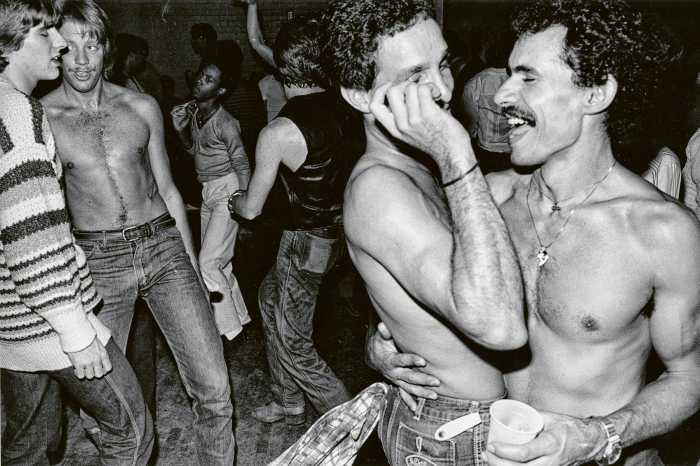(COLUMBIA UNIVERSITY PRESS)
If William S. Gilbert is remembered today, for many people it is thanks to the two musical biopics about his collaboration with the composer Sir Arthur Sullivan — a 1954 version starring the rotund British queen Robert Morley as Gilbert and 1999’s Academy Award-winning “Topsy-Turvy,” by director Mike Leigh, featuring the talented Anglo-Irish character actor Jim Broadbent as Gilbert and openly gay Allan Corduner as Sullivan.
If the first film is musically superior to the second — featuring as it did members of the D’Oyly Carte Opera Company, formed to produce the collaborations between Gilbert and Sullivan — the second movie is the more amusing in cinematic terms.
Neither, however, captures the importance of Gilbert as he deserved to be remembered. And it is one of the great values of Carolyn Williams’ “Gilbert & Sullivan: Gender, Genre, Parody,” just reissued in paperback by Columbia University Press, that it restores the duo’s comic operettas to their rightful place as the precursors of modern musical comedy and brings back to the fore Gilbert’s considerable talents as a profound social critic of the stodgy hypocrisies of the Victorian era.
The prolific Gilbert was already established as a dramatist, drama critic, and social satirist well before he and Sullivan scored their first mutual triumph with their hit musical “Trial by Jury” in 1875. He was the author of 75 plays, much admired by both George Bernard Shaw and Oscar Wilde. Indeed, Wilde’s “The Importance of Being Earnest” was directly inspired by a Gilbert play, “Engaged.” (The word “earnest” was late Victorian homosexual code for “queer,” being a creative corruption of the word “urnings,” the name given to same-sexers by the pioneer German homosexual liberationist Karl Heinrich Ulrichs.)
Wilde and Gilbert not only knew each other well and maintained a considerable correspondence — some of which is cited in Williams’ book — but the Gilbertian libretto for the G& S musical “Patience, or Bunthorne’s Bride” helped to create and shape the public image Wilde would adopt.
The Art for Art’s Sake aesthetic movement with which Wilde became so identified after its launch by the influential queer critic Walter Pater “was familiar (and even hackneyed) in England” when “Patience” was first produced in 1881, the same year that Wilde’s first book of poems was published.
It has often been said that Wilde was the model for Bunthorne, the somewhat effeminate, lily-bearing aesthete in “Patience.” But Williams, in her scrupulously researched book, demonstrates that just the opposite was true.
Although the G&S operettas were transatlantic hits in America as well as Britain — indeed, there were many pirated versions offered on American stages throughout the country as well as the Carte-produced official ones on Broadway — Pater’s aesthetic movement had not taken hold in America as it had in England.
Therefore, Carte reasoned, the phenomenon had to be initiated here so that its parody might be recognized in “Patience” when the operetta was scheduled for its American tour. Thus, writes Williams, “With his usual entrepreneurial acumen, Carte hired Wilde to conduct his now-famous lecture tour of North America, specifically so that regional groups of the American public would be exposed to an aesthete, before the touring production of ‘Patience’ reached their nearest theater.”
As another historian cited by Williams tells us, “Recognizing Wilde’s potential as an aesthetic poster boy… D’Oyly Carte paid Wilde to tour North America posing as the poseur he was supposed to be in order that the parody poseurs of ‘Patience’ should pay off.”
Bunthorne was the model that Wilde attempted both to imitate and to prefigure on his American tour, Williams explains: “Wilde acted as Bunthorne’s avatar: in cultural history, ‘Wilde’ was a spin-off product… Bunthorne represents a jumbled-up and generalized stereotype that had been popularized primarily through the middlebrow, journalistic reaction against it. Wilde inhabited that stereotype, attempting to turn it to his own advantage.”
Wilde arrived in New York amid a great flurry of advance publicity and then appeared in several cities wearing his aesthetic garb — a double-breasted velvet jacket with a wide collar, velvet knee breeches, and silk stockings. This outfit, inscrutably both avant-garde and retro, was inspired by Bunthorne’s costume in “Patience,” which was designed by Gilbert.
As Williams puts it, “Wilde’s costume now resonates with the deep pile of historical texture, looking luxurious and venerable under the retrospective light provided by decades of gay studies and queer theory. Immortalized in the studio photograph by Napoleon Sarony, the costume bespeaks Wilde’s extravagantly brilliant nose-thumbing at bourgeois respectability, his strength, and his beauty.”
If the American press, spurred on by Carte’s manipulations, caught on to the fact that Wilde was to be treated as an oddity, it did not always tie his appearance back to the Bunthornean effeminate type presented in “Patience.” For example, the New York Tribune emphasized Wilde’s manliness: “The most striking thing about the poet’s appearance is his height, which is several inches over six feet.” The report went on to describe other aspects of his appearance, noting that his eyes were not “dreamy,” but “quick,” and his hands not delicate, “only fit to caress a lily,” but rather powerful, for “his fingers are long and when doubled up would form a fist that would hit a hard knock.”
Still, the figure of Bunthorne, whom he was paid to represent, went far toward establishing the Wilde persona that the world would come to know. During his lecture tour in America he made a special side trip to Camden, New Jersey to meet his hero, Walt Whitman. As Neil McKenna tells us in his essential revisionist biography, “The Secret Life of Oscar Wilde” — which restored him to us as a precursor of gay liberation — Wilde wrote to his friend John Addington Symonds, the homosexual liberationist who’d been unable to extract from Whitman, in extensive correspondence, the admission of his affinities that his queer British admirers longed for, exclaiming, “I can still feel his kiss upon my lips.”
In his American tour, Williams notes, “We see an early Wilde flirting brilliantly with the aesthetic stereotype as his fan, daring to inhabit a conventionally ridiculed type and to re-create it with the force of his character.”
Thus, the G&S operetta “informed the public figure of Wilde more than the figure of Wilde informed ‘Patience.’ In a real sense, Gilbert emerged as Wilde’s dresser on the world historical stage. Oscar Wilde emerged into the public spotlight with the figure of Reginald Bunthorne behind him.”
This is just one of the many invaluable insights provided by Williams’ brilliant and thoughtful book, not the least of which is Gilbert’s role, in his musical libretti, as a critic of Victorian women’s oppression and the double-standard straightjacket to which they were condemned. This richly rewarding read will be appreciated by any serious student of theater — not just G&S fans — who will find confirmation of homosexual themes at many places in the Gilbert and Sullivan oeuvre. This book is indeed a remarkable achievement.
GILBERT & SULLIVAN: Gender, Genre, Parody | By Carolyn Williams | Columbia University Press | $25.95, paperback | 454 pages

































